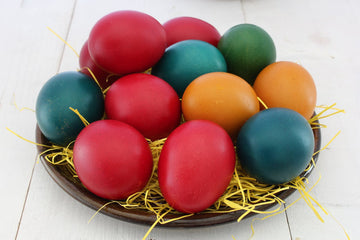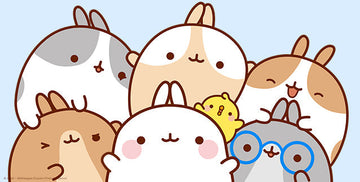Easter is a holiday celebrated by many around the world, filled with unique traditions and meaning. This article explores ten interesting facts about Easter, shedding light on its history and the customs that people have come to cherish.
Readers will discover how Easter's traditions have evolved over time and what makes this holiday special across different cultures. From the origins of the Easter Bunny to significant beliefs that shape the celebration, these facts provide insight into why Easter remains a significant event for millions.
1) The largest chocolate Easter egg ever made weighed over 15,000 pounds.
The largest chocolate Easter egg was created in Italy in 2011. It weighed an impressive 15,873 pounds, which is about 7,200 kilograms.
This giant egg stood at 10.39 meters tall, measuring 34 feet 1 inch in height.
At its widest point, it had a circumference of 19.6 meters, or 64 feet 3.65 inches.
The egg was made by a company called Tosca and was displayed at Le Acciaierie Shopping Centre in Cortenuova, Italy.
This record-breaking creation continues to be celebrated for its size and craftsmanship.

2) The White House Easter Egg Roll has been a tradition since 1878.
The White House Easter Egg Roll started in 1878 under President Rutherford B. Hayes. He opened the White House grounds for children to roll eggs on Easter Monday. This event quickly became popular among families in Washington, D.C.
The tradition has continued every year since then. Children gather on the South Lawn to play games, enjoy snacks, and celebrate spring. Many different activities have been added over the years, making it a fun event for everyone involved.
This cherished event celebrates both Easter and community spirit. It reflects the joy of spring as families come together to participate in this unique American tradition.
3) Peeps marshmallow candies originally took 27 hours to make by hand.
Peeps are a popular Easter candy that many people enjoy. When they were first created, it took a long time to make them. Each chick-shaped candy was made by hand and required about 27 hours to complete.
This lengthy process was due to several factors. The marshmallow mixture needed time to cool, and the candy had to be carefully formed and coated with sugar.
Today, with modern machines, the production time for Peeps has dropped dramatically. It now takes only about six minutes to create the same amount of candy, showing how technology has changed candy-making.
4) Easter is a movable feast, dependent on the lunar calendar.
Easter is known as a movable feast. This means it does not have a fixed date each year.
The date of Easter changes because it is based on the lunar calendar. Specifically, it is celebrated on the first Sunday after the first full moon following the vernal equinox, which is around March 21.
This calculation ties Easter to the Jewish Passover, which also uses a lunar system. This connection reflects the early Church’s desire to maintain ties to Jewish traditions.
As a result, Easter can fall anywhere between March 22 and April 25 each year. This variability is what makes Easter unique among Christian holidays.
5) In medieval Europe, an egg-throwing festival was held inside churches.
In medieval Europe, churches hosted a unique egg-throwing festival during Easter. This tradition involved the priest throwing a hard-boiled egg to a choir boy. The boy would then pass the egg to another, creating a chain as they tossed it around the church.
The game added excitement to Easter celebrations. It often ended when the clock struck twelve, and the person holding the egg would win it. This fun and playful activity highlighted the festive spirit of Easter in that era.
6) The Easter Bunny tradition originated in Germany in the 1700s.
The Easter Bunny tradition has its roots in Germany. In the 1700s, German immigrants brought this custom to America.
The character known as the Osterhase, or Easter Hare, was central to early celebrations. This hare would deliver colorful eggs to well-behaved children.
In Germany, Easter is known as Ostern. The Easter Bunny became a popular figure among families celebrating the holiday.
As German settlers moved to Pennsylvania, they shared this tradition. It grew and transformed, eventually becoming an integral part of American Easter celebrations.
7) Pysanka is the traditional Ukrainian art of egg painting.
Pysanka is a unique art form practiced in Ukraine, centered around decorating eggs for Easter. Artists use a technique called wax-resist to create intricate designs on eggs.
First, they draw the design with melted wax. Then, they dip the egg into various dyes. This process is repeated to achieve vibrant colors and detailed patterns.
The eggs often feature traditional symbols that convey different meanings. Many people create pysanky during the last week of Lent, using smooth, well-shaped eggs for their work.
Pysanka reflects deep cultural significance and has been a part of Ukrainian traditions for centuries. It connects modern celebrations with ancient customs.
8) Americans consume over 16 million jelly beans each Easter.
During Easter, Americans enjoy a huge amount of jelly beans. It is estimated that they consume over 16 billion jelly beans.
This large number shows just how popular these sweet treats are during the holiday.
Many families include jelly beans in their Easter baskets each year. Kids love finding them hidden around the house or yard.
Jelly beans are not just a tasty treat; they also come in many colors and flavors. This variety makes them even more appealing to children and adults alike.
9) Hot cross buns were traditionally baked during Easter in England.
Hot cross buns are a popular Easter treat in England. They are spiced sweet buns made with currants or raisins and marked with a cross on top.
Traditionally, these buns were eaten on Good Friday to commemorate the Crucifixion of Jesus. Their specific spices and sweet flavor represent the festive nature of Easter.
In the past, an English queen banned hot cross buns, allowing them to be baked only on certain holidays. Over time, these buns became widely accepted and celebrated as an essential part of Easter festivities.
10) The Easter parade tradition began in New York City in the late 19th century.
The Easter parade in New York City started in the late 1800s. It became a way for people to show off their new spring clothes after church services. This event coincided with the Easter holiday.
Participants often wore large, decorative hats. These hats became a symbol of the parade. Over time, the event grew into a lively street celebration.
The parade is informal, allowing anyone to join, regardless of social status. Today, thousands gather to take part in the festivities along Fifth Avenue. This lively tradition continues to attract visitors from all over the world.





